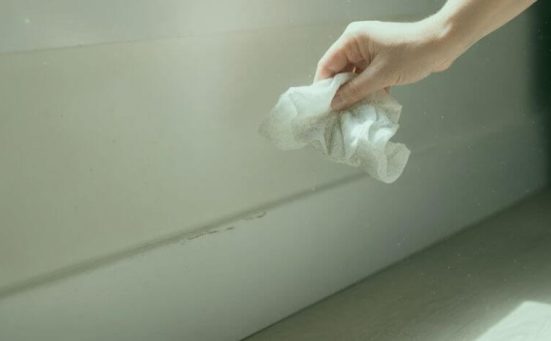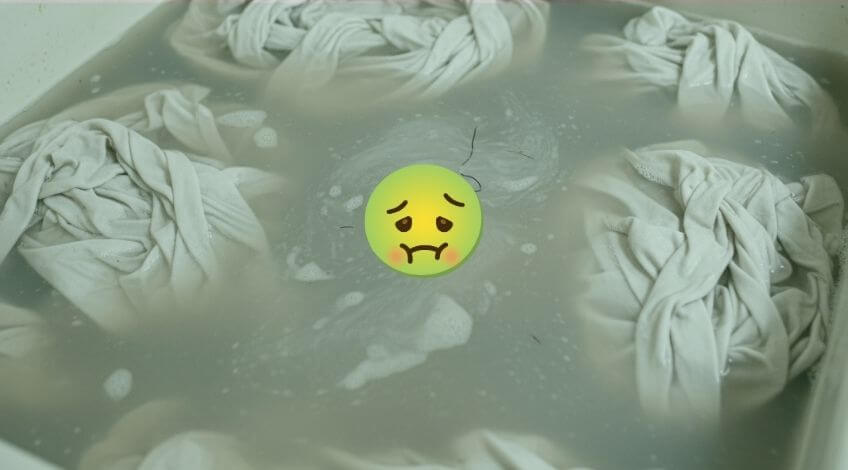
Laundry Stripping: The Viral Cleaning Trend That Actually Works
Your gym kit still reeks after a hot wash. Those towels that should smell fresh are giving off a musty whiff. Sound familiar? If you’re one of those people who’s convinced their washing machine is broken because nothing comes out truly clean, laundry stripping might just blow your mind.
This viral cleaning trend promises to pull years of built up grime, detergent residue and body oils from your fabrics. The best part? You’ll actually see the murky water as proof that your supposedly “clean” laundry was harbouring all sorts of nastiness. For gym enthusiasts battling stubborn odours or anyone who wants proper evidence their washing is spotless, this method delivers results you can literally see.
What Is Laundry Stripping?
Laundry stripping is exactly what it sounds like: stripping away everything that’s been building up in your fabric fibres over months or years of washing.
Unlike your regular wash cycle, this deep cleaning process uses a powerful combination of hot water and specific cleaning agents to draw out detergent buildup, fabric softener residue, body oils and even mineral deposits from hard water. The technique originated in commercial laundries but exploded on social media when people started sharing photos of their disgustingly murky “clean” laundry water.
How Does Laundry Stripping Work?
The process works through a combination of chemistry and time. Hot water opens up fabric fibres, while the cleaning agents break down and dissolve accumulated residues. The extended soaking time allows everything to be drawn out gradually, creating that satisfying (if slightly gross) murky water that proves just how much gunk was hiding in your supposedly clean clothes.
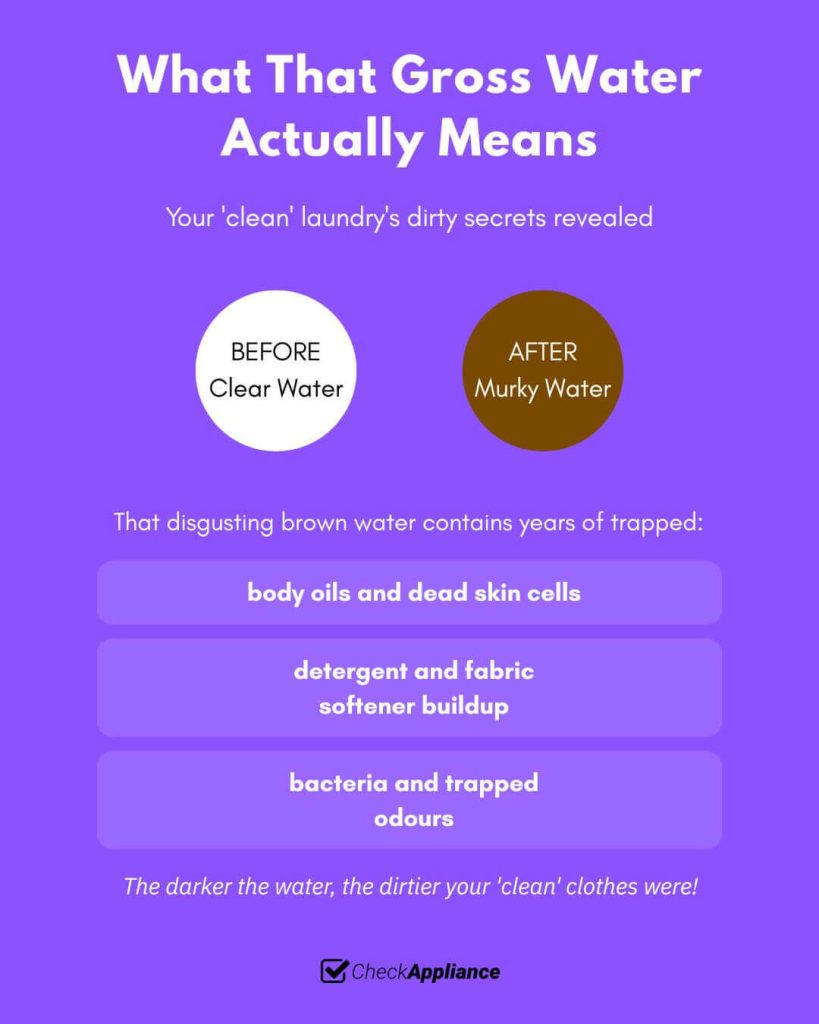
This isn’t just about making your laundry look cleaner either. Stripped fabrics often feel softer, smell fresher for longer, and become more absorbent. For gym gear that never quite loses that sweaty smell, or towels that seem to repel water rather than absorb it, stripping can restore them to their original performance.
Why Your Gym Kit Never Smells Fresh
If you’ve ever pulled your favourite workout top from the washing machine only to catch a whiff of yesterday’s training session, you’re experiencing the frustration of detergent and fabric softener buildup.
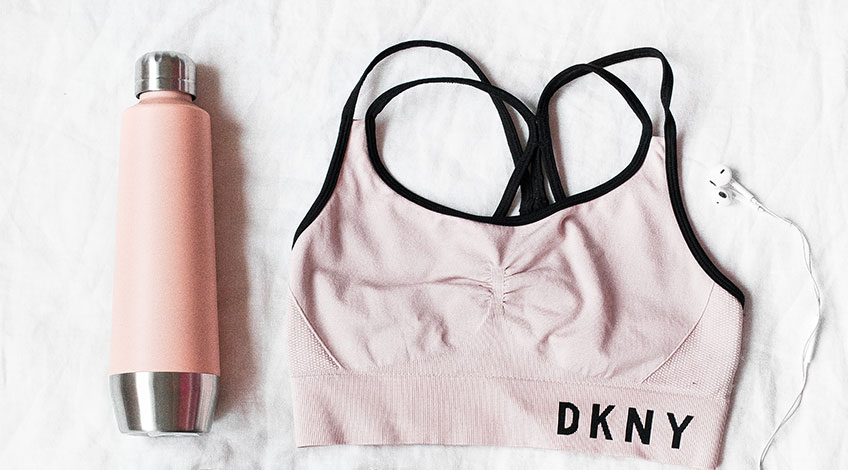
Modern detergents and fabric softeners are designed to coat fibres to provide softness and fragrance. Over time, these coatings build up, creating a barrier that traps odours and prevents proper cleaning. This is particularly problematic with synthetic fabrics commonly used in activewear, which already struggle with odour retention.
The Synthetic Fabric Problem
Synthetic materials like polyester and nylon are brilliant for wicking moisture during workouts, but they’re also magnets for body oils and bacteria. These fabrics have a different structure to natural fibres, making it easier for oils and odours to penetrate and stick around.
When you add layers of detergent residue on top, you’re essentially sealing in the very smells you’re trying to wash out. This is why your gym clothes might smell fine when dry but release that unmistakable sweaty odour the moment they get damp again.
The Complete Laundry Stripping Method
Ready to see just how much grime your “clean” laundry has been hiding? Here’s the foolproof method that’s been shocking people across social media.
What You’ll Need
Before you start, gather these essential ingredients:
- Borax (available in the cleaning aisle of most supermarkets)
- Washing soda (sodium carbonate, not baking soda)
- Laundry detergent (powder works better than liquid)
- A large basin or clean bathtub
- Very hot water
- Rubber gloves (these ingredients can be harsh on skin)
The ratio is simple: for every gallon of hot water, you’ll need 1/4 cup of borax, 1/4 cup of washing soda, and 1/2 cup of laundry detergent powder. Don’t substitute baking soda for washing soda, they’re chemically different and won’t give the same results.
Step By Step Instructions
Start With Hot Water
Fill your basin or bathtub with the hottest water possible. The temperature needs to be much higher than your washing machine can achieve, ideally around 60°C or hotter.
Mix Your Solution
Add the borax, washing soda, and detergent powder to the hot water. Stir until everything dissolves completely. The mixture should look clear once properly dissolved.
Add Your Laundry
Submerge your items completely in the solution. Don’t overcrowd the basin, your clothes need room to move freely in the water. Start with items of similar colours to avoid any potential dye transfer.
Let Time Do The Work
Leave everything to soak for 4 to 6 hours minimum. Many people prefer to leave items overnight for maximum effectiveness. You’ll notice the water starting to change colour as the process works.
Stir Occasionally
Every hour or so, give everything a gentle stir with a wooden spoon or clean stick. This helps the process along and ensures even treatment.
Rinse Thoroughly
After soaking, rinse each item multiple times in clean water until the water runs clear. Any residual cleaning solution left in the fabric can cause irritation.
Wash As Normal
Run your stripped items through a regular wash cycle without any additional detergent or fabric softener. This final rinse ensures everything is properly clean.
What To Expect: The Shocking Results
Prepare yourself for a bit of a shock. The water will likely turn various shades of brown, grey, or even black depending on what’s been lurking in your fabrics.
This discoloured water is proof positive that your washing machine wasn’t getting everything out. You’ll see oils, dead skin cells, detergent residue, fabric softener buildup and potentially years of accumulated grime floating in the water.
Different Fabrics, Different Results
Towels and bedding typically produce the most dramatic colour changes in the water. These items absorb and hold onto body oils, dead skin and product residues more than other fabrics.
Gym clothes and activewear often create surprisingly dark water despite being washed regularly. The synthetic fibres and tight weave trap odours and oils that regular washing can’t shift.
Jeans and cotton items might show less dramatic results but will often feel noticeably softer and more comfortable after stripping.
Safety Considerations And Important Warnings
Before you get carried away with the excitement of seeing all that grime, there are some important safety points to consider.
The chemicals used in laundry stripping are potent and need to be handled with care. Always wear rubber gloves when handling borax and washing soda, as they can cause skin irritation. Ensure your workspace is well ventilated, especially when working with hot water and chemical solutions.
What Not To Strip
Not all fabrics are suitable for this intensive treatment. Avoid stripping:
- Delicate fabrics like silk, lace, or wool
- Items with elastic such as bras or swimwear (the heat can damage the elastic)
- Dry clean only garments
- Anything with special waterproof coatings
- Brightly coloured items that might run (test a small area first)
When To Skip The Strip
Don’t attempt laundry stripping if you have sensitive skin or allergies to the chemicals involved. Pregnant women should also avoid handling these cleaning agents. If you’re unsure, stick to gentler alternatives or consult with a healthcare provider.
Maintaining Your Fresh Results
Once you’ve experienced the satisfaction of truly clean laundry, you’ll want to maintain those results. Here are some strategies to prevent the buildup that made stripping necessary in the first place.
Adjust Your Regular Washing Routine
Use less detergent than you think you need. Most people use far too much, contributing to the residue problem. Start with half the recommended amount and adjust if needed.
Skip the fabric softener on towels and gym clothes. Fabric softener creates a coating that reduces absorbency in towels and traps odours in activewear. For soft clothes without the buildup, try adding white vinegar to your rinse cycle occasionally.
Wash Smarter, Not Harder
Wash gym clothes promptly after use, don’t let them sit in your kit bag for days. The longer sweat and bacteria have to set in, the harder they are to remove.
Use the hottest water safe for your fabrics. Heat helps break down oils and kill bacteria more effectively than cold water washing.
Don’t overload your machine. Clothes need space to move freely for proper cleaning. If items are packed too tightly, detergent can’t reach all surfaces effectively.
Alternative Methods For Different Needs
If the full stripping method seems too intensive, or if you don’t have access to all the ingredients, there are gentler alternatives that can still improve your laundry’s cleanliness.
The Vinegar Soak Method
For a milder approach, try soaking items in hot water with two cups of white vinegar for 2 to 4 hours. This method is particularly good for removing soap buildup and mineral deposits from hard water. It’s gentler than the full stripping recipe but still effective for many items.

The Oxygen Bleach Alternative
Oxygen bleach (colour safe bleach) mixed with hot water can provide similar results to stripping, especially for white and light coloured items. Use one cup of oxygen bleach per gallon of hot water and soak for 4 to 6 hours.
Signs Your Laundry Needs Stripping
Not sure if your laundry would benefit from stripping? Here are the telltale signs that buildup is affecting your clothes’ cleanliness and performance.
Your towels feel less absorbent than they used to, almost repelling water rather than soaking it up. This is a classic sign of fabric softener buildup creating a waxy coating on the fibres.
Gym clothes smell fine when dry but develop an odour the moment they get damp or you start sweating. This indicates trapped bacteria and oils that regular washing isn’t removing.
Clothes feel stiffer or less soft despite using fabric softener regularly. Ironically, too much fabric softener can make fabrics feel rough and coated rather than soft and natural.
You notice white or grey residue on dark clothes after washing, or colours look dulled despite being relatively new. This suggests detergent isn’t rinsing out properly and is building up in the fibres.
Transform Your Laundry Game Forever
Laundry stripping isn’t just a viral trend, it’s a genuine game changer for anyone frustrated with clothes that never seem truly clean. Whether you’re battling persistent gym gear odours or simply want proof that your washing is actually working, seeing that murky water is both satisfying and eye opening.
The process might seem intensive, but most people find they only need to strip their laundry once or twice a year. Combined with improved washing habits, stripped clothes stay fresher and cleaner for much longer than before.
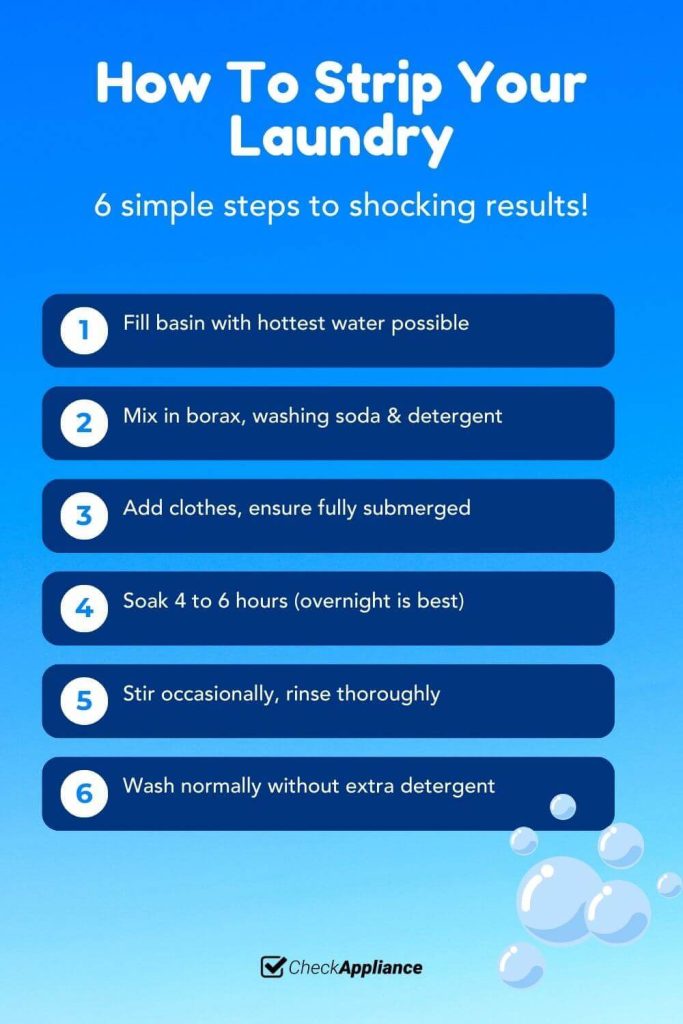
DOWNLOAD THE LAUNDRY STRIPPING GUIDE HERE! (FREE)
Ready to see what’s really been hiding in your “clean” laundry? Try stripping a small load first to see the results for yourself. You might be shocked at what comes out, but you’ll love how fresh and clean your clothes feel afterwards!
If you found this guide helpful, share it with your friends on Facebook or save it for the next time your gym kit needs some serious attention!
SEE ALSO: How To Clean A Steam Iron
Also, follow us on Pinterest ...



